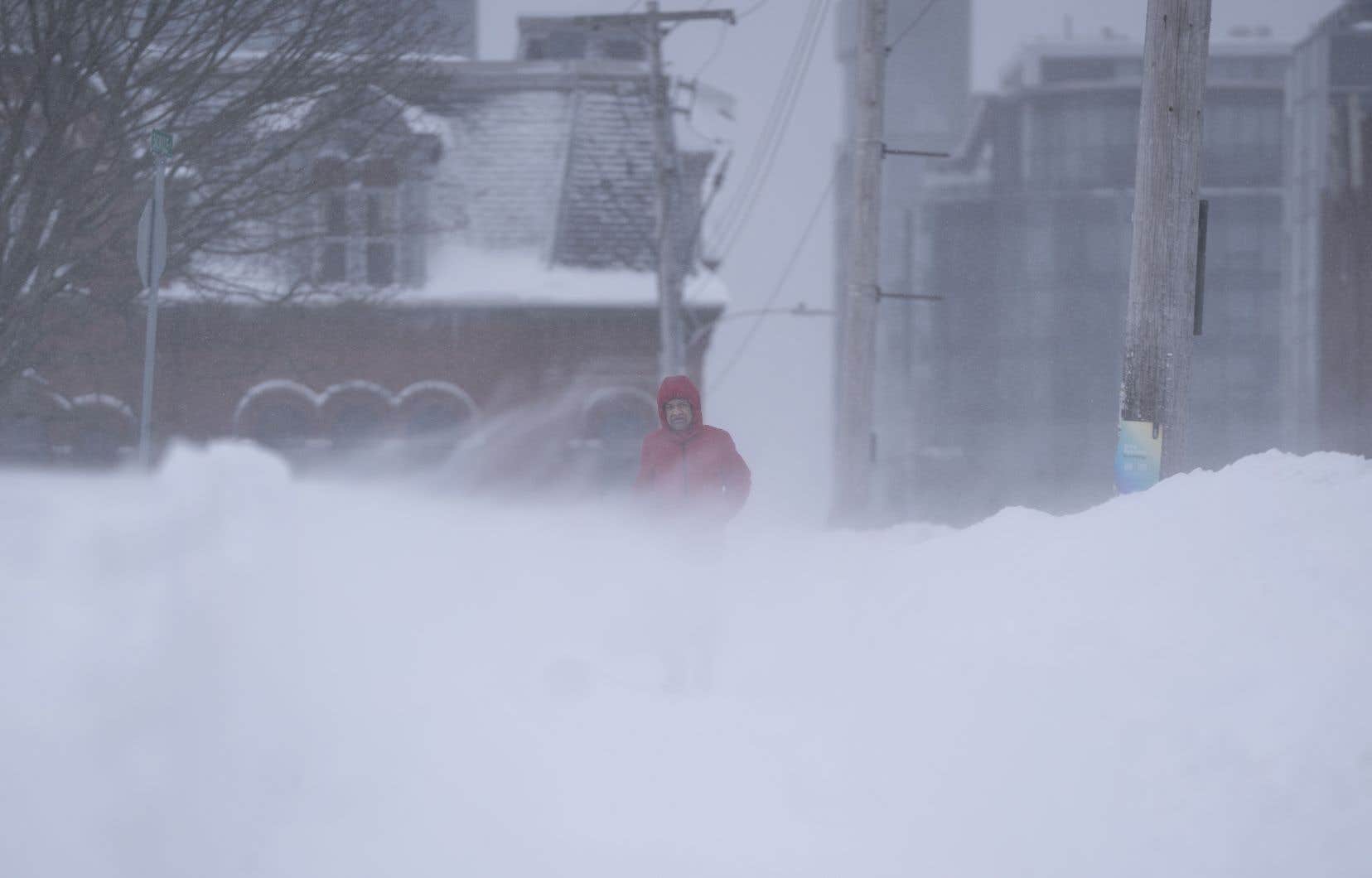A state of emergency remained in effect Monday in parts of Cape Breton, as Nova Scotia recovered from one of the heaviest snowfalls in 20 years.
On Sunday afternoon, as a low pressure system continued to dump snow on the island for a second day, the Cape Breton Regional Municipality declared a state of emergency and urged people to stay home .
In an online message, the MRC asked citizens not to travel in the region. “Roads are clear for emergency response and travel of essential workers. The process is slow and snow plows require several passes to deal with the significant accumulation,” authorities said.
On Monday morning, Environment Canada reported that a volunteer weather observer recorded 150 centimeters of snow in Sydney, Cape Breton’s largest community. In addition, 103 cm of snow was recorded at Sydney Airport, and 98 cm fell on Ingonish, on the northeast coast of the island.
Images posted on social media show huge accumulations of snow on houses, vehicles completely covered and abandoned on main arteries, and residents digging exits with shovels to get out of their homes.
Ian Hubbard, a Halifax-based meteorologist for Environment Canada, said more than 100 cm of snow was being reported in various locations in Cape Breton.
The Mi’kmaq community of Eskasoni, about 40 kilometers southwest of Sydney, declared a local state of emergency early Monday morning. “Eskasoni First Nation has exhausted all its resources, with vehicles capable of clearing snow within the community blocked or unable to continue operations,” officials said in an online post.
More than 70 cm of snow was recorded in eastern Nova Scotia, but strong winds since Friday have carved out huge snow banks that will require several days of snow removal.
In the Halifax area, between 30 and 50 cm have fallen since Friday afternoon, but 84 cm have been reported at Halifax Stanfield International Airport, according to preliminary reports. Many flights were canceled or delayed at the region’s busiest airport, and more than 7,000 power outages were reported across the province as of Monday morning.
Schools were closed and administrations delayed their openings or closed for the day, except in municipalities in western Nova Scotia, where snowfall was much lighter.
High winds over the weekend made it difficult to accurately measure snowfall, Hubbard said. For example, northeast of the Halifax area, communities in Pictou County reported between 50 and 100 cm of snow.
Mr Hubbard said the center of the snowstorm settled south of Cape Sable Island on Friday afternoon and barely moved until Monday morning, when it began to break.
“Typically a winter storm tends to move north or northeast and move, resulting in 12 to 18 hours of precipitation, but this storm has been treading water,” the meteorologist said. .
In Prince Edward Island, a provincial by-election scheduled for Monday was postponed until Tuesday.
Twenty years ago, in February 2004, a storm dumped up to 95 cm of snow in the Halifax area. This storm was nicknamed “White Juan” because it occurred five months after Hurricane Juan made landfall near Halifax, with destructive gusts reaching 140 km/h.
